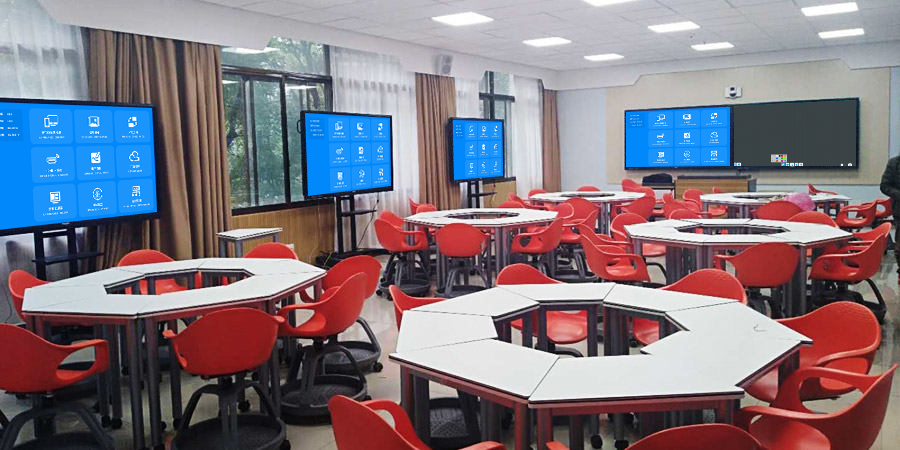Interactive Classrooms: Making Lessons More Engaging, Learning More Effective
In today’s rapidly evolving digital education landscape, traditional one-way teaching methods can no longer meet the demands of modern instruction. Interactive classrooms have emerged to address this need, using intelligent technology to break down classroom boundaries. They make teaching easier for educators, learning more focused for students, and classroom interactions more dynamic, truly achieving a “student-centered” revolution in education.
Core Advantages of Interactive Classrooms
- Wireless Screen Mirroring, One-Click Sharing: Teachers and students can mirror content from phones, tablets, and laptops with a single click, displaying courseware, assignments, or group discussion results in real time. This frees them from cables, making lessons more flexible and efficient.
- Multi-Screen Interaction, Collaborative Learning: Supporting multiple people to mirror simultaneously, it offers features like split-screen comparison, real-time annotation, and interactive quizzing. This transforms the classroom from “one-way lecturing” to “two-way interaction,” sparking student engagement and creativity.
- Intelligent Management, Easy Control: Teachers can switch mirrored content with one click, lock screens, or open interactive permissions, flexibly controlling the pace of the lesson and ensuring efficient and organized teaching.

How Interactive Classrooms Empower Smart Learning
- Efficient Instruction: Teachers can access multimedia resources at any time and combine them with whiteboard annotations, making explanations more intuitive and vivid.
- Group Collaboration: Students’ group discussion results can be instantly mirrored for display, fostering teamwork and brainstorming.
- In-Class Quizzes: Teachers can launch real-time classroom questions or polls, quickly gather feedback, and adjust teaching strategies.
- Remote Teaching: Supports blended online and offline teaching, allowing remote students to participate in classroom interactions synchronously.
Applicable Scenarios
- K12 Smart Classrooms: Enhance student engagement and improve teaching quality.
- University Seminars: Support group discussions and academic presentations, fostering critical thinking.
- Corporate Training: Interactive presentations and real-time feedback make training more efficient.
- Online Education: Break spatial limitations and create an immersive learning experience.
The Future Classroom, Interaction First
The interactive classroom is more than just a hardware upgrade; it’s an innovation in teaching methodology. It shifts the classroom from being “teacher-led” to “teacher-student co-creation,” moving from “passive listening” to “active exploration,” truly unleashing the potential of digital education.